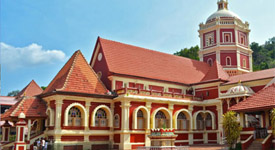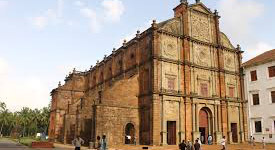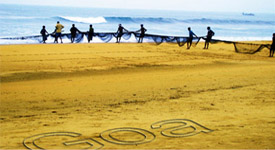About Goa
- ICSGUPSTM 2018
- About Goa
- About DTE Goa
- About Sanjay Ghodawat Group
- About Sanjay Ghodawat University
- Conference Advisory Board
- Conference Organising Committee
- About Conference
- About Conference Objectives
- Call for Paper
- Paper Submission Guidelines
- Important Dates
- Who Can Attend the Conference
- Conference Fees
- Awards & Publications
- Contact
- Sponsorship Opportunity

Goa is more than beaches and parties. Goa is a multicoloured blend of Indian
and Portuguese progressive cultures, with sun, sea, sand, seafood and spirituality which makes
Goa a unique place of India. Goa is a tiny land on the west coast of India, the 25th state of
the Union states of India, was liberated from Portuguese rule in 1961. Goa covers an area of 3702 square kilometres.
Goa has been attracting a wide-ranging flow of visitors; pilgrims visiting Catholic and Hindu temples,
those opting to settle in Goa as their home, people going for medical treatment, and a growing number
who attend seminars and conferences in Goa. Goan culture has been shaped mainly by the Hindu and Catholic
population. Goa is well connected by air, rail and also by ship.
Goa's biggest attraction is golden-sand beaches. This sparkling feature of Goa stretches along the Arabian
Sea from top to bottom of the state. Each of the various beaches has developed their own characters and
standings. All wonderful beaches provide to every tropical impulse: from Arambol, Baga to the palm-fringed
sands of Palolem, Anjuna and Mandrem. The beaches range from expansive and fancy five-star resorts to shacks
welcoming footprints of guest and crabs.
Food can be thoroughly enjoyed in Goa. The fragrances and flavors of Goanise food will wonder and tempt even
veteran travellers: whether it's typical fish curry rice, a morning bhali-paua, piquant vindaloo.
Goa is a wonderful place of India for its Portuguese architecture and heritage. Their permanent mark is still
evident in the state with decorative architecture, whitewashed churches, crumbling forts, colorful Catholic
ceremonies, mournful fado music and the cathedrals of Old Goa.



